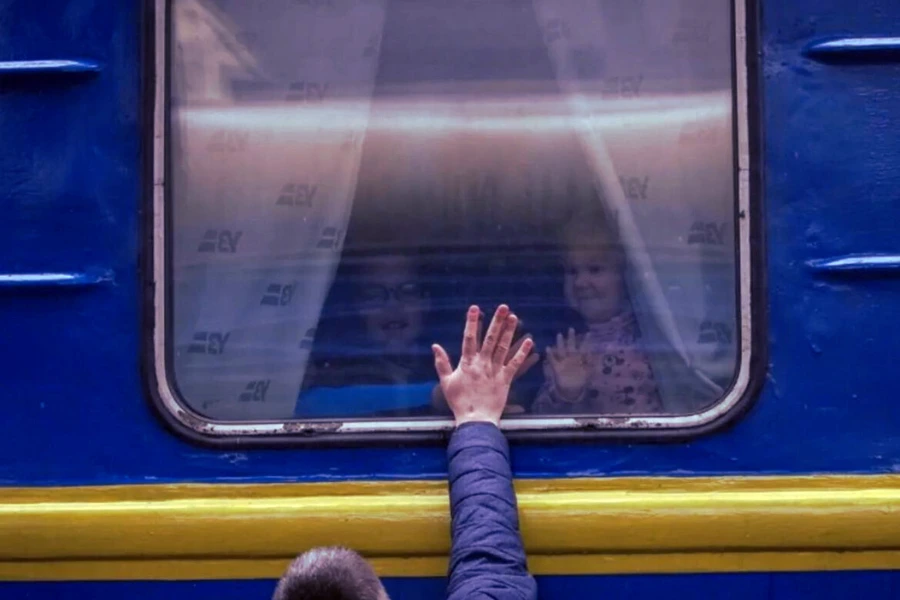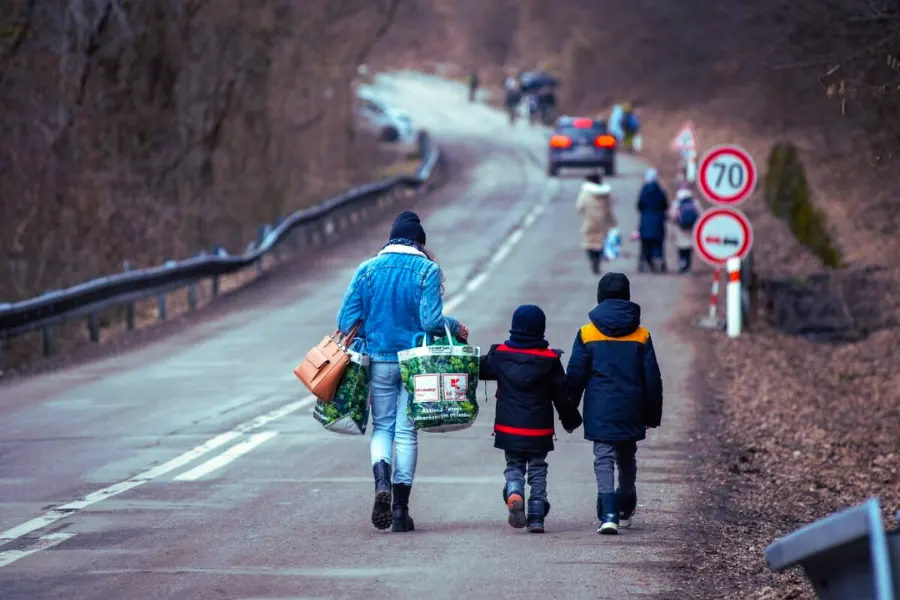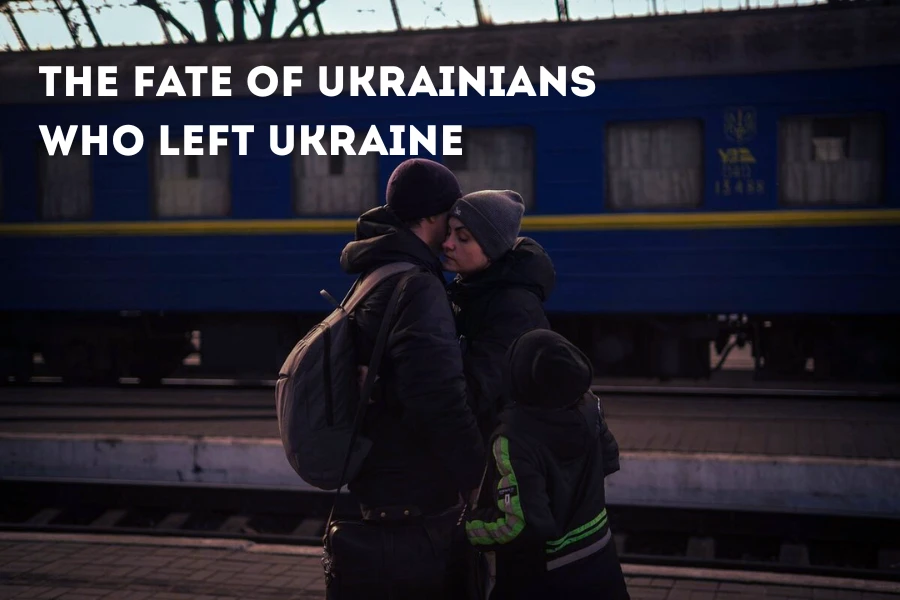The Fate of Ukrainians Who Left Ukraine: Main Destinations and Chances of Return
Denys Kostrzhevskyi, Chairman of the Board of Directors of Kyiv International Airport, expert in public-private partnerships
Over the past three years, I, Denys Kostrzhevskyi, have witnessed a dramatic demographic shift: millions of Ukrainians were forced to leave their homes, escaping the horrors of war. Some departed only days before the invasion—as if sensing the inevitable—while others fled under the sound of the first explosions.
As of September 2025, the UN Refugee Agency recorded 5.7 million Ukrainian refugees worldwide, with 90 percent residing in European countries. These figures are staggering and raise pressing questions: Where are our people now? Will they maintain their connection with Ukraine? And under what conditions could they return home?
Geography of Forced Migration
The main flow of refugees moved toward neighboring EU states—the first to open their borders and hearts. The largest Ukrainian communities have taken root in Germany (about 1.2 million, ~20 percent of all refugees) and Poland (around 1.0 million, ~18 percent). Significant groups also live in the Czech Republic (over 380 thousand), Spain, Italy, and other countries.
Beyond Europe, smaller but meaningful destinations emerged as well. Official data show that the United States accepted roughly 5 percent of all Ukrainian refugees, and together with Canada accounts for less than 10 percent of the total—still hundreds of thousands of people. Under the Uniting for Ukraine program alone, more than 187 thousand Ukrainians arrived in the U.S., and another 350 thousand found other legal pathways. In Canada, the CUAET program approved about 963 thousand applications, and nearly 300 thousand Ukrainians had arrived by April 2024.
In summary, the vast majority of Ukrainian emigrants settled in the EU, while a smaller yet significant share found refuge in North America and beyond. Each has now experienced life abroad and faces a defining choice: to return—or to build a new future elsewhere.

Will Ukrainians Return? Trends and Barriers
At the onset of the war, hope prevailed. In 2022, during the first major migration wave, 89 percent of Ukrainians abroad said they definitely planned to return after the war. People believed that shared suffering would inspire national renewal.
But as the conflict dragged on, reality altered expectations. By 2024, research by the Center for Economic Strategy revealed a worrying trend: for the first time, most refugees no longer intended to return soon. Surveys showed that by late 2024 only 43 percent still planned to go back—down from 74 percent in December 2022. More than half are now uncertain or have decided to stay abroad.
Why? The reasons vary—from better living standards abroad to economic stability—but one of the main deterrents is the loss of trust in Ukrainian institutions and the fear of encountering corruption again. Refugees have experienced a different reality: transparent government services, impartial courts, and predictable business rules—things they now expect at home.
Yet even with all these advantages abroad, many still dream of returning once peace is restored—to rebuild their lives on native soil. However, persistent corruption and injustice in Ukraine form a wall of distrust that can stop even those longing for home.
As a citizen and entrepreneur who deals daily with Ukrainian realities, I understand these fears. Corruption remains a systemic problem affecting nearly every aspect of life. If we fail to overcome it, we risk losing the very people whose return could fuel our recovery.
According to the Center for Economic Strategy, in addition to corruption, refugees cite ongoing military risks, destroyed housing and infrastructure, low wages, and limited job opportunities as key reasons for hesitation. These obstacles mean that a significant share of Ukrainians may remain abroad for many years—or permanently.
Support from Abroad and Preserving Connections
Despite the distance, Ukrainians abroad have not severed ties with their homeland. Many who have not returned still keep in touch, send money home, and follow Ukrainian news.
The rapidly growing diaspora has become a “second front” of support. Since the full-scale invasion began, Ukrainians worldwide have organized communities and volunteer hubs to assist their country—raising funds, sending humanitarian aid, hosting charity events, and lobbying for Ukraine in their host governments.
At the same time, prolonged residence abroad naturally changes lives. Children attend foreign schools; adults find jobs, learn the local language, and integrate into society. Each passing month raises the psychological and practical threshold for returning home.
Analysts estimate that 1.7 to 2.7 million Ukrainians may remain abroad permanently—nearly half of all current refugees. Such a loss of human capital would deliver a painful blow to the economy, reducing potential GDP and deepening demographic imbalances—population aging and workforce shortages. Ukraine risks losing a large share of its active, skilled generation.

Chances of Return: Looking Ahead
Is there hope for a positive outcome? As a Ukrainian, I assess the challenges realistically yet remain cautiously optimistic. We already see some of the most devoted citizens returning—especially those with stable jobs or strong family roots in Ukraine.
Studies show that “patriotically oriented” refugees with minimal integration abroad are the most determined to return: up to 86 percent plan to do so. These people represent our key potential for post-war renewal. The state must nurture their motivation and ensure comfortable reintegration—clear business rules, opportunities for professional growth, housing programs for returnees, and above all, zero tolerance for corruption at every level.
We must do our homework now—without waiting for the war to end. If Ukraine becomes a country with genuine transparency, fair justice, and efficient reconstruction, many will want to come back.
Forecasts suggest that 2.5 to 3.5 million Ukrainians could return after victory—hundreds of thousands of hands and minds strengthened by experience abroad. Their potential is enormous: they will bring new skills, European business practices, and valuable connections. Many already declare: “We believe in a better future and want to rebuild it at home.”
Our task is to ensure these words translate into real opportunities in post-war Ukraine.
In the long run, the fate of millions of emigrants will mirror the fate of Ukraine itself. I firmly believe: if the country becomes safe, just, and dynamically developing, most of those who were forced to leave will come home.
And when peace finally returns to Ukrainian soil, we will greet them with open arms—to write together a new chapter in the story of Ukraine’s rebirth. That is what we must work for today—so that the chance of return becomes not only a dream, but a reality.
Denys Kostrzhevskyi,
Chairman of the Board of Directors of Kyiv International Airport,
expert in public-private partnerships.
